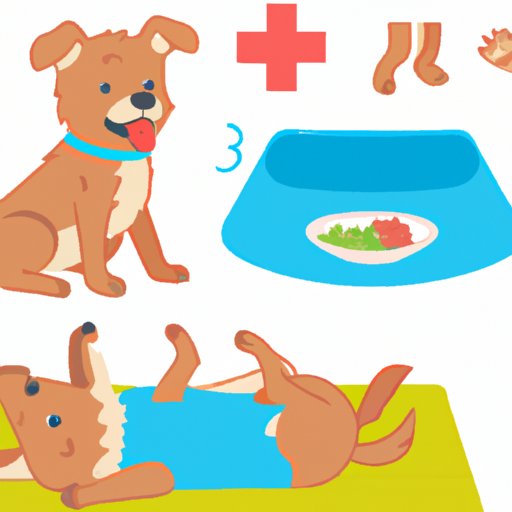
I. Introduction
Potty training is an important skill for any pet owner to master, especially for those with puppies. Training a puppy to do their business outside requires patience, consistency, and proper techniques. In this article, we will cover a step-by-step guide to potty training a puppy, common mistakes to avoid, age-specific potty training, different approaches to potty training, and tips for troubleshooting.
II. Step-by-Step Guide to Potty Training a Puppy
Before you start training your puppy, you will need a few things: a leash and collar, treats, cleaning supplies, and a designated potty area. Make sure to choose an outdoor area that’s easy to access and has enough space for your puppy to roam around.
The key to successful potty training is establishing a routine and consistency. This means taking your puppy outside at the same times each day, such as after they wake up from a nap, after they eat, and before bedtime. Praise and reward your puppy each time they go to the bathroom in the designated potty area.
Start with short trips outside and gradually increase the amount of time you spend outside. If your puppy has an accident inside, clean it up immediately and avoid scolding or punishing your puppy.
It’s important to remember that potty training takes time and patience. Depending on the breed and age of your puppy, it can take weeks or even months before they are fully trained.
III. Common Mistakes to Avoid During Potty Training
One common mistake pet owners make during potty training is not being consistent with their routine. If you don’t take your puppy outside at the same times each day, it can confuse them and make training more difficult.
Another mistake is punishing your puppy for accidents. Punishing your puppy can make them fearful and hesitant to go to the bathroom in front of you, making training more difficult.
Additionally, some pet owners give their puppies too much freedom and don’t supervise them enough, which can lead to accidents. It’s important to keep a close eye on your puppy during training and limit their access to areas of the house where accidents can occur.
To avoid these mistakes, remember to establish a consistent routine, avoid punishing your puppy, and supervise them closely during training.
IV. Age-Specific Potty Training
The recommended age to start potty training a puppy is between 12-16 weeks old, but this can vary depending on the breed and individual puppy. For younger puppies, it’s important to start with short trips outside and gradually increase the time spent outside.
For older puppies, you can begin teaching them to signal when they need to go outside by using a bell or scratching at the door.
Regardless of age, it’s important to establish a routine and consistency during training.
V. Different Approaches to Potty Training
There are different approaches to potty training, and each has its own benefits and limitations. One approach is crate training, which involves confining your puppy to a crate when you can’t supervise them. This can help teach your puppy to hold their bladder and develop a routine. However, it’s important not to leave your puppy in the crate for too long and to gradually increase their time spent outside of the crate.
Another approach is outdoor training, which involves using a strict routine to teach your puppy to go outside only when it’s time to do their business. This technique can be effective, but it requires patience and consistency.
Regardless of the approach you choose, remember to use positive reinforcement and praise your puppy when they go to the bathroom in the designated potty area.
VI. Troubleshooting Potty Training
During potty training, it’s common to encounter challenges. One common problem is a lack of progress, where your puppy continues to have accidents even after several weeks of training. In this case, it’s important to go back to basics and reinforce the importance of consistency and routine during training.
Another problem is your puppy refusing to go outside in bad weather. In this case, try using an indoor potty area or teaching your puppy to wear a raincoat.
Overall, it’s important to be patient during potty training and avoid punishing your puppy for accidents. Keep in mind that every puppy is different and may require a unique approach or extra time to become fully trained.
VII. Conclusion
Potty training is an important skill for any pet owner to master. With the right tools, techniques, and patience, you can successfully train your puppy to go outside and use the designated potty area. Remember to establish a routine and consistency, avoid common mistakes, and use positive reinforcement to encourage good behavior. By following these tips, you can ensure a happy and healthy relationship with your furry friend.




